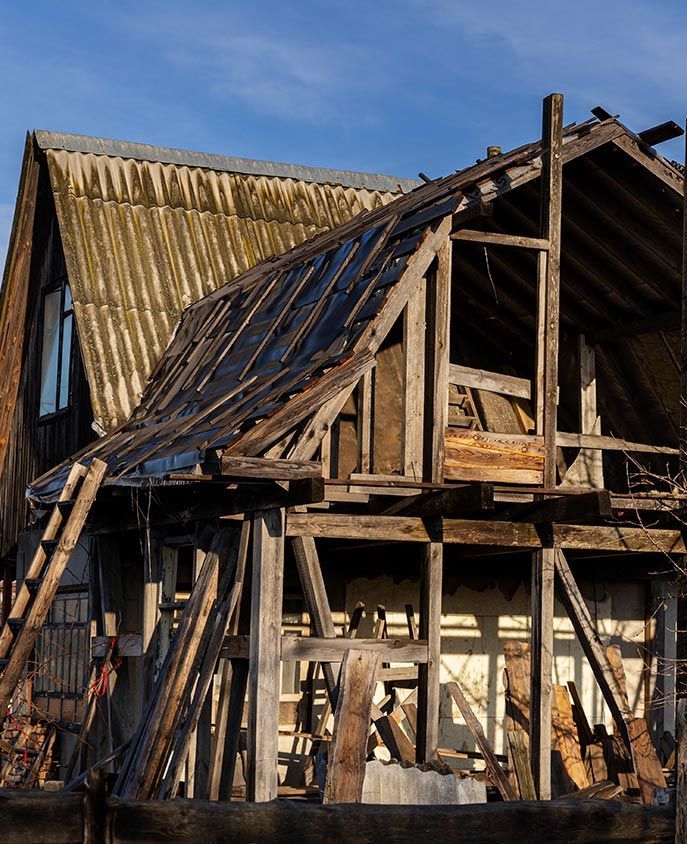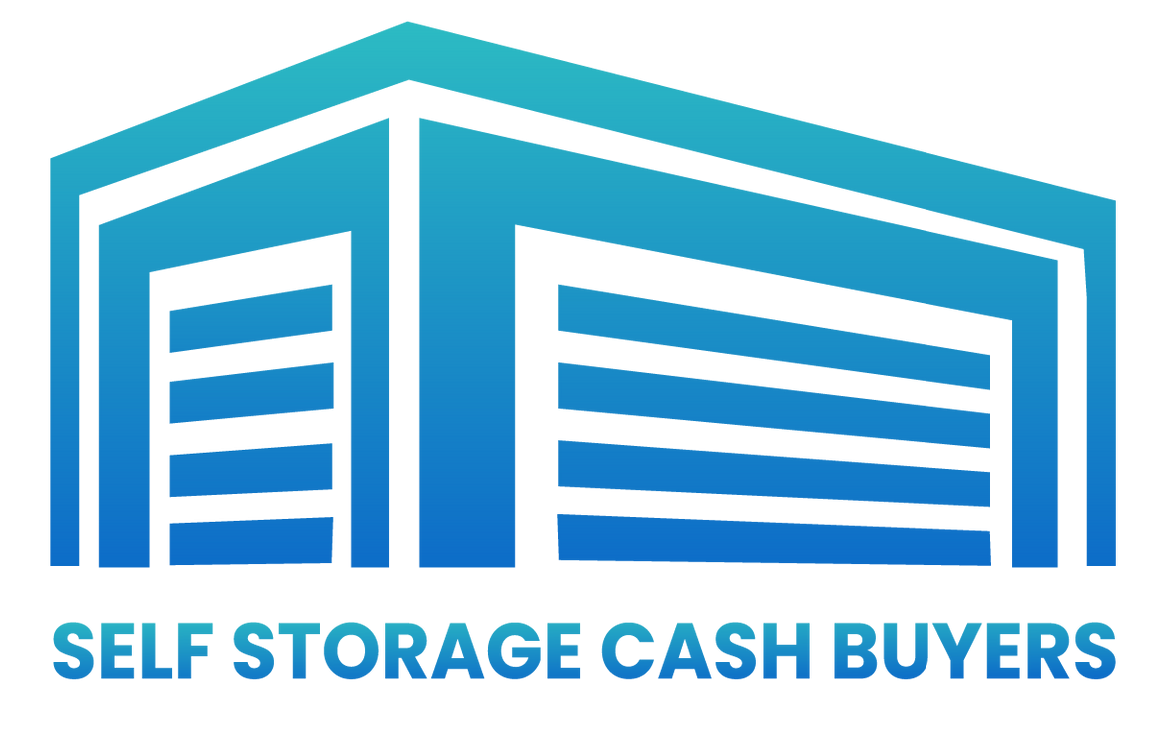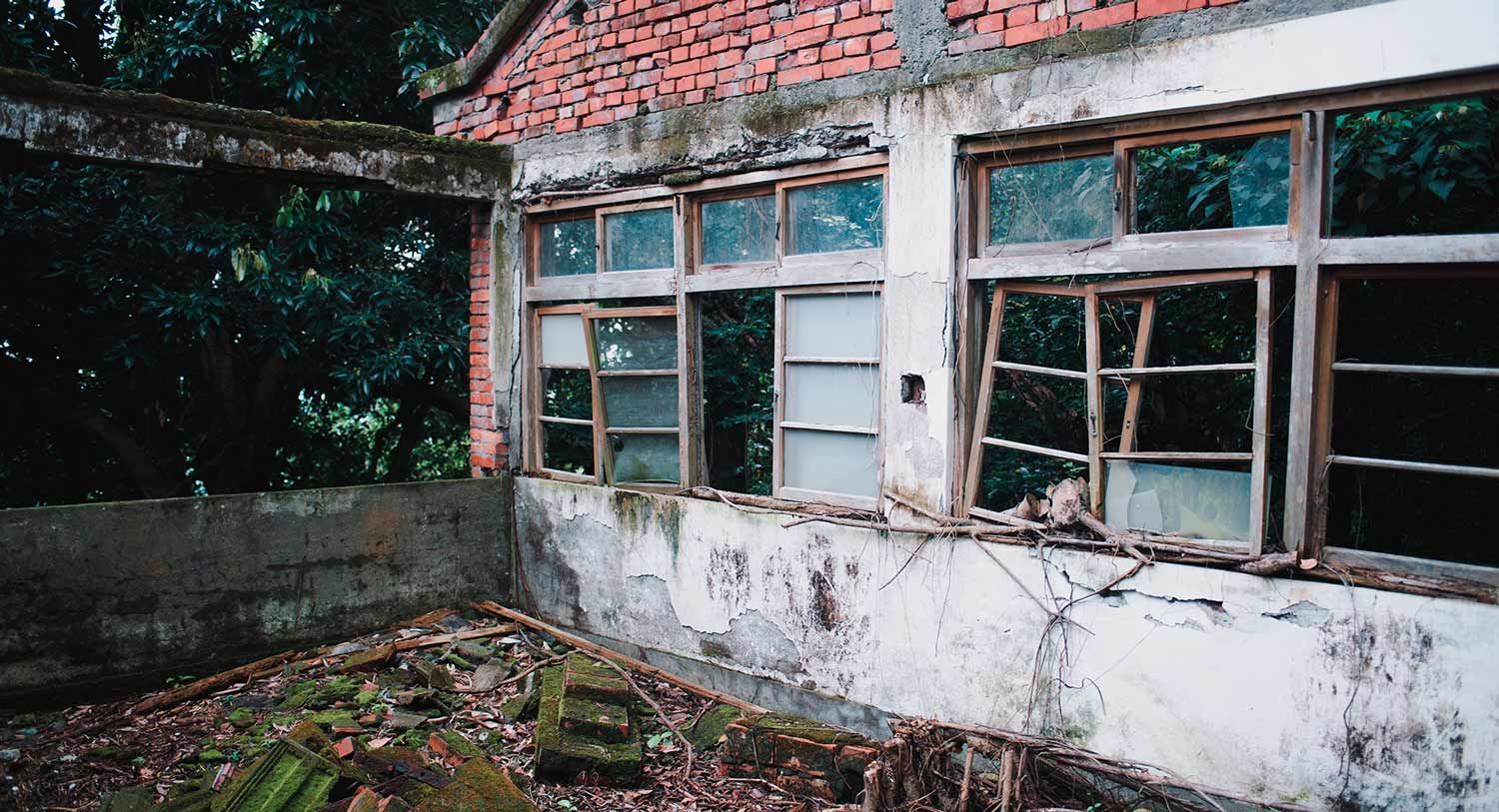Call Us Now:
Your Guide to Different Storage Unit Sizes
Published on December 15, 2023
Free Offer Form
We will get back to you as soon as possible.
Please try again later.
The most common self-storage unit size is 5'x5' or 25 square feet, which is good for storing small items like boxes, tools, and small furniture.
For medium items like furniture or appliances, go for 5'x15' or 10'x10' units. You may also opt for large units like 10'x15', 10'x30, or bigger, which are about as large as a two-car garage.
Choosing the right size is crucial—a storage unit that's too small will be cramped, while an oversized unit is a waste of money.
Not sure how to choose the right size? Stay with us to learn about available storage unit sizes, what fits where, and how to calculate your ideal self-storage unit size.
Exploring Storage Units
Utilizing storage units and lockers is an easy, safe way to store your things while moving or making room at home.
Equity investors and homeowners alike can store everyday things like clothes and extra furniture or even bigger items like cars, boats, medical supplies, or tools from your business. It all depends on how much space you have.
What is a Storage Unit?
A storage unit is a versatile space that allows you to explore different storage options beyond your home or business.
These units offer a practical and affordable way to store things you don't use regularly, like seasonal clothes, holiday decorations, or business supplies—with rental options tailored to different needs.
These units typically look like rectangular rooms with metal doors, and are found in secure facilities with various sizes available.
Storage units are typically rented by the month.
Importance of Choosing the Right Storage Unit Size
It is important to compare the costs of different sizes to avoid overpaying for a storage unit. You can do this by visiting different storage facilities or using a storage unit comparison website.
After comparing costs, pick the size that fits your budget. Here are other reasons why choosing the right size is important.
- Cost Efficiency: Pick a storage size that fits your belongings to avoid paying for extra space you don't need.
- Accessibility: A well-organized storage unit is like a neat one-room—easy to move around and find your things when needed.
- Item Protection: Get the right-sized unit to keep your things safe. It's like ensuring your clothes have one room to breathe, preventing damage from dust or pests.
- Convenience: Storing everything in one unit is very convenient and can make your life simpler and less stressful.
Comprehensive Storage Unit Size Guide
Storage units generally become more expensive with size, but it's essential to consider various factors.
Understanding how square footage influences these prices is crucial because storage rates can vary significantly.
Storage unit size may not be uniform across all facilities, but for a better sizing idea, here's a general breakdown.
Small Storage Units
The smallest storage unit you'll typically find is a 5'x5, but storage lockers measuring around 4'x5' are an excellent choice for even smaller belongings.
Nonetheless, small units are akin to having a large closet for your storage needs. See how they measure and what fits inside.
- Lockers (4'x5') - Like a chest of drawers, lockers are typically 4'x5' or 20 square feet, which is great for storing seasonal items or those you don't use often.
- 5'x5' (25 sq. ft.) - Like a spacious walk-in closet, this size is great for a few boxes of personal items, small furniture, and seasonal stuff you need to store, like winter clothing or sports gear.
- 5'x10' (50 sq. ft.) - A small bedroom is perfect for storing bedroom or small apartment contents during major lifestyle transitions. It's ideal for furniture, storing a few boxes' worth of items, or slightly larger seasonal items.
Medium Storage Units
Medium-sized storage units can accommodate substantial items at a reasonable cost.
These units, often around 5'x15' or 10'x10' in size, are versatile for families storing belongings from a two-bedroom apartment to a three-bedroom house.
Medium storage units offer room for larger items like refrigerators, washers, and dryers, furniture like couches, dining tables, bedroom sets, and mid-sized business inventory.
- 5'x15' (75 sq. ft.) - Perfect for a two-bedroom house or small apartment and can also store a small vehicle like a motorcycle.
- 10'x10' (100 sq. ft.) - Ideal for a three-bedroom apartment or medium-sized house and can also store a larger vehicle like a compact car or an SUV.
Large Storage Units
Larger units of 10'x15' to 10'x30' sizes or larger can accommodate the complete belongings of a four-bedroom house, furniture, and bigger vehicles such as a helicopter.
Here's how much each large-sized unit can accommodate.
- 10’x15’ (150 sq. ft.) - Four-room equivalent, ideal for furniture and belongings from a larger family.
- 10’x20’ (200 sq. ft.) - Perfect for sizable home contents or multiple rooms' worth of belongings.
- 10’x25’ (250 sq. ft.) - Designed for extensive storage needs, fitting belongings from a larger household or more.
- 10’x30' (300 sq. ft.) - This unit is ideal for storing vehicles, families' belongings during a move or remodel, and big businesses' tools and equipment.
What Can You Fit in Different Storage Units?
When choosing a self-storage unit, it's important to consider what you need to store and how much you're willing to spend.
But how many boxes or items can you store in each of these storage unit sizes?
What Fits in a Small Storage Unit?
Small self-storage units are roughly 50 square feet and are suitable for items from a small closet or a studio apartment.
They're great for storing small items like the following.
- Personal items: Documents, books, or memorabilia.
- Seasonal clothing: Winter coats, summer dresses, or holiday attire.
- Sporting equipment: Bicycles, golf clubs, or camping gear.
- Small furniture: Side tables, chairs, or compact shelves.
- Appliances: Microwaves, mini-fridges, or small kitchen gadgets.
- Outdoor gear: Camping equipment, gardening tools, and outdoor furniture cushions.
What Fits in a Medium Storage Unit?
Medium-sized units are 5'x10' or 10'x15'. These storage units can fit the contents of a two-bedroom apartment to a three-bedroom house
Medium self-storage units are perfect for storing the following items.
- Boxes and appliances: 10-15 boxes of clothes, books, and a microwave or mini-fridge.
- Furniture: Sofa, dining set, and bedroom furniture.
- Electronics: A TV, gaming console, piano, and audio equipment.
- Clothing: Wardrobe, including seasonal and special garments.
- Household goods: Kitchenware, bedding, and linens.
- Vehicle: A motorcycle, car, or a smaller boat.
What Fits in a Large Storage Unit?
Large and extra-large units range from 10'x15' to 10'x30' or even larger and offer plenty of room to store everything from a complete four-bedroom home to significantly larger items.
Large self-storage units can hold more and larger items compared to medium-sized units. They're useful if you need to store items like below.
- Large appliances: Refrigerators, washers, dryers, stoves, dishwashers, and other major appliances.
- Bigger furniture: Entire sofas, dining sets, and larger bedroom sets.
- Electronics: TVs, home entertainment systems, and large electronic devices.
- Business equipment: Ideal for medium to large business inventories, including bulky equipment and merchandise from heavy machinery and industrial sectors.
- Vehicles: Suitable for storing boats, vans, cars, SUVs, or an RV (recreational vehicle.)
Calculating the Storage Unit Size You Need

Length x Width x Height = Storage unit size in cubic feet
To calculate the unit size, multiply the length, width, and height in cubic feet. If all your belongings fit in a 5x5-foot space, you'll need a space of at least 25 square feet.
As a general rule, choose a slightly larger unit than the total cubic footage of your belongings to ensure enough space.
Factors to Consider When Calculating Storage Size
Many investment professionals can manage investments properly by understanding the factors involved in calculating storage size.
So, to steer clear of the common pitfalls associated with choosing the wrong storage unit size, consider the following factors.
1. Item Dimensions
- Measure your belongings' length, width, and height to get their cubic footage in square feet. It is important to choose the right size storage unit.
2. Total Volume
- Sum up the cubic footage of all items. This gives you the total volume of the items you can store in a single unit.
3. Space Efficiency
- Check your home for unused storage space before renting a storage unit. This can help you avoid unnecessary costs.
4. Cost Comparison
- Compare the cost of different storage units using a storage unit size guide and the prices from other self-storage facilities
5. Flexibility
- Choose a unit that's slightly larger than your belongings. This will give you enough space to move around and organize them easily—especially if you need more space in the future.
Step-by-Step Guide to Estimating Your Storage Needs
A step-by-step guide to estimating storage needs shows you how to choose the perfect size storage unit.
Here are 6 simple steps to follow.
1. Make an Inventory List
- Begin by creating a detailed list of all the items you intend to store. This should include everything from furniture and appliances to smaller items like boxes and personal belongings.
2. Group Items
- Categorize your items based on their size, type, and how frequently you use them. This step helps in visualizing the quantity and nature of your stuff. Avoid storing sensitive items in a storage unit!
3. Measure Space
- Take measurements of your items in square footage. This step is crucial for determining your required storage unit size. Will you need a unit as big as one room or bigger?
4. Consider Future Additions
- Anticipate any potential changes in your space needs. If you plan to acquire new items or expect changes in your living situation, account for these factors in your calculations.
5. Visit Facilities
- Whenever possible, visit different storage companies. This allows you to get a firsthand look at the available spaces and better visualize how your items will fit.
6. Consult Staff
- Property managers can give you data-related insights into choosing the right unit size—a one-bedroom unit or a bigger storage facility.
Frequently Asked Questions
Before capping off this storage unit size guide, learn more about the different sizes below.
What Are the Standard Dimensions of Storage Units?
The standard unit sizes vary depending on the self-storage facility. But here are the common storage unit sizes you'll likely encounter in a standard company's size guide.
- Small Units (5'x5' to 5'x10') - Great for storing seasonal items like clothes, sporting equipment, or other small items common in student housing or a one-bedroom unit.
- Medium Units (5'x10' to 10'x10') - Versatile and good for storing the belongings of a two-bedroom house or three-bedroom home.
- Large Units (10'x15' to 10'x30') - Large self-storage units are spacious enough for storing items in a four- or bigger-bedroom home or big things like vehicles and furniture.
NOTE: Besides storage units, storage facilities may offer services like lockers and trailer rentals.
How Do I Calculate the Size of the Storage Unit I Need?
Length x Width x Height = Storage unit size in cubic feet
For example, if you have a sofa, bed, and dresser, you would measure the above dimensions in cubic feet.
Then, multiply each item's length, width, and height to get its volume, then add up all volumes for the total volume.
Make sure to choose a storage unit that's a little bit bigger than that total number. For example, if all your belongings take up 200 cubic feet, choose a storage unit with at least 250 square feet.
What Items Can I Fit in a Small/Medium/Large Storage Unit?
Based on a general storage unit size guide, here's how much stuff you can store in each unit.
- Small self-storage units can store small items like boxes, clothes, and sporting equipment (rackets, balls, etc.)
- Medium self-storage units can accommodate items from a two- or three-bedroom home, including furniture, electronics, and even a motorcycle.
- Large self-storage units can hold larger items like appliances, furniture, business inventory, and even vehicles.
How Do Storage Unit Sizes Compare to Common Spaces Like a Garage?
10'x10' storage units are about half the size of a standard one-car garage. They offer 100 square feet and 800 cubic feet of storage space.
Also, according to a self-storage statistics report from IBISWorld, 10'x10' small self-storage units are widely popular among different data sources.
These units can accommodate enough belongings to fit one room, two, and even three rooms, approximately half the size of a standard one-car garage.
Therefore, medium self-storage units are about the size of a garage.
Can I Change My Storage Unit Size After Renting?
Yes. Tenants have the flexibility to change their storage unit size after renting.
It's a practical solution if your storage needs grow. However, some facilities may charge fees for this adjustment.
It's advisable to inquire about any potential costs associated with changing unit sizes before changing your storage unit's size.
Conclusion
Picking the right storage unit size is crucial for safety, cost-efficiency, and a hassle-free storage experience.
Consider your budget, future needs, and unit sizes available. Plan for the future by getting a slightly larger self-storage, but declutter first to save money on unit size.
Following this guide will surely help you find the perfect-sized storage unit that fits your needs without breaking the bank!
Free Offer Form
We will get back to you as soon as possible.
Please try again later.
Have A Storage Facility You Want To Sell?
we buy storage facilities in these states
List of Services
-
California
-
Texas
-
Florida
-
New York
-
Pennsylvania
-
Illinois
-
Ohio
-
Georgia
-
North Carolina
-
Michigan
-
New Jersey
-
Virginia
-
Washington
-
Arizona
-
Tennessee
-
Massachusetts
-
Indiana
-
Missouri
-
Maryland
-
Wisconsin
-
Colorado
-
Minnesota
-
South Carolina
-
Alabama
-
Kentucky
-
Louisiana
-
Oregon
-
Oklahoma
-
Connecticut
-
Utah
-
Nevada
-
Iowa
-
Arkansas
-
Kansas
-
Mississippi
-
New Mexico
-
Idaho
-
Nebraska
-
West Virginia
-
Hawaii
-
New Hampshire
-
Maine
-
Montana
-
Rhode Island
-
Delaware
-
South Dakota
-
North Dakota
-
Alaska
-
Vermont
-
Wyoming


